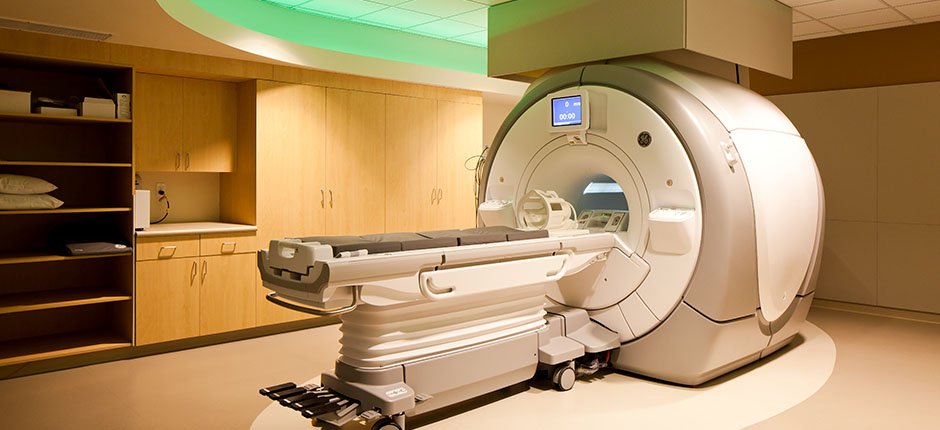
Inside the Machine: Demystifying the MRI
High-V MRI (0.55T MRI): Here to Stay
Traditionally, we believed that high-quality MRI exams required a field strength of 1.5T or above. However, recent breakthroughs have challenged this notion. Enter High-V MRI, operating at a field strength of 0.55T. Let’s uncover its benefits:
Improved Implant Imaging: High-V MRI reduces metal distortions, making it easier to visualize metal implants. This advancement enhances diagnostic capabilities for implant imaging. Reduced Susceptibility Challenges: Susceptibility artifacts, common in MRI, are minimized with High-V MRI. Geometric distortions in diffusion imaging are significantly reduced, leading to improved diagnostic quality. Pulmonary Imaging Opportunities: Pulmonary imaging, historically challenging due to air-tissue interfaces, finds new possibilities with High-V MRI. It expands the reach of pulmonary MRI capabilities.
Reduced Helium Means New Frontiers in Feasibility (and Sustainability) Installing an MRI system in a limited space has always been a challenge. Helium-free infrastructure has changed the game.
- Smaller, Lighter Systems: Organizations can now install smaller, lighter MRI systems in areas where bulkier technology was previously unfeasible.
- Economic Installation: Helium-free systems offer cost-effective solutions for hospitals and clinics.
- Sustainability: By reducing helium usage, we contribute to a more sustainable environment.
MRI continues to evolve, and these innovations promise better patient experiences, streamlined workflows, and high-quality diagnostic images. Stay tuned for more exciting developments in the MRI landscape.
Unveiling the Mysteries of MRI: A Journey Inside the World of Magnetic Resonance Imaging
Magnetic Resonance Imaging, or MRI, is a remarkable technological advancement that has revolutionized the field of medical diagnostics. It's a non-invasive imaging technique that allows physicians to peer inside the human body with unprecedented clarity, helping to diagnose a myriad of conditions ranging from broken bones to brain tumors. In this blog, we'll delve into the fascinating world of MRI, exploring how it works, its applications, and the impact it has had on modern medicine.Understanding the Basics:
At its core, MRI relies on the principles of magnetism and radio waves to generate detailed images of the body's internal structures. Unlike X-rays or CT scans, which use ionizing radiation, MRI is considered safer as it does not expose patients to harmful radiation. The process begins with the patient lying inside a large cylindrical magnet. This magnet creates a powerful magnetic field that aligns the hydrogen atoms within the body's tissues. Radiofrequency coils then emit pulses of radio waves, causing these aligned atoms to produce faint signals. By analyzing these signals, sophisticated computer algorithms reconstruct detailed images of the body's anatomy, allowing healthcare professionals to visualize organs, tissues, and abnormalities with remarkable clarity.
Applications in Medicine:
MRI has become an indispensable tool in various medical specialties, enabling clinicians to diagnose and monitor a wide range of conditions. Some of its key applications include
Advancements and Future Prospects:
Over the years, MRI technology has continued to evolve, leading to significant advancements in imaging quality, speed, and accessibility. Innovations such as functional MRI (fMRI), which maps brain activity during specific tasks, and diffusion tensor imaging (DTI), which visualizes the brain's white matter tracts, have expanded the capabilities of MRI beyond anatomical imaging.
Looking ahead, ongoing research efforts aim to further enhance MRI's capabilities and address existing limitations. Developments in artificial intelligence and machine learning are being leveraged to improve image reconstruction algorithms, reduce scan times, and enhance diagnostic accuracy. Additionally, efforts are underway to make MRI more portable and cost-effective, potentially increasing its accessibility in resource-limited settings.
